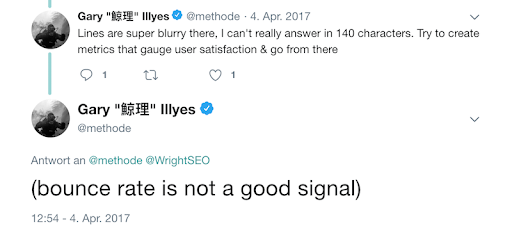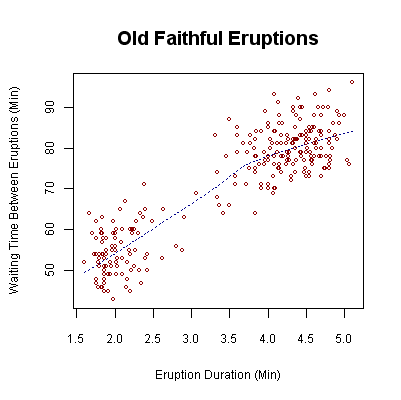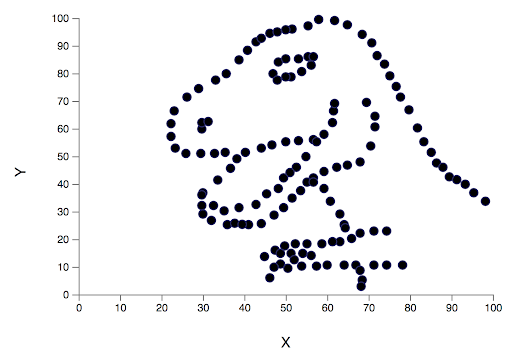The bounce rate tells you how often users leave the website without having visited more than one subpage. These bounces are often viewed as bad, because they indicate that the website did not manage to interest the visitor enough for them to continue browsing the site.
- Is the bounce rate a ranking factor?
- What does Google mean by ‘noisy’?
- What is a good bounce rate?
- What are the benefits of the bounce rate?
- Bounce rate for a specific target group
- Specific term explained
- What are the disadvantages of bounce rate?
- What is the difference between bounce rate and exit rate?
- Conclusion
Bounce rate is a category that is measured in web analytics applications such as Google Analytics. This enables website operators to see what percentage of visitors bounce from their site, i.e. do not visit any other pages after visiting their site. The bounce rate calculates the proportion of visitors who, after accessing a website via a subpage, leave the domain after viewing this page.
The bounce rate is not to be confused with the exit rate.
In online marketing, a low bounce rate is generally seen as a hallmark of a good site, as it is assumed that a visitor who delves deeper into a website is interested in that site’s content. In addition, many believe that Google uses bounce rate as a ranking factor.
Google provides the following example to illustrate how this works:
- Monday: Page A > Page B > Page C
- Tuesday: Page B > Page A > Page C
- Wednesday: Page A > Exit
Source: https://support.google.com/analytics/answer/2525491
The bounce rate of page A is 50%. This is because Analytics only looks at Monday and Wednesday, as these are the instances in which page A was the first page on the site that the user accessed. On Wednesday, no other page on the domain was accessed. Two entries on page A and one exit gives us a 50% bounce rate for page A.
Is the bounce rate a ranking factor?
The bounce rate is not a ranking signal!
Various Google employees have commented on this several times over the years:
“I’ll just say that bounce rates would be not only spammable but noisy.”
Matt Cutts (ref. no longer available.)
and Garry Illyes on Twitter:

What does Google mean by ‘noisy’?
When Matt Cutts talks about ‘noisy’ signals, he is talking about distortions of the data that make attempts to visualise and interpret that data very difficult. Google tries to look for signals that have a clear either/or structure and are situation-independent – for example, ‘having biscuits is good’ and ‘not having biscuits is bad’.
This is an example of a distribution without a lot of noise, with two data clusters that are relatively easy to distinguish from one another:

Data are noisy when well-defined areas are missing:

Even if the data is clearly defined, it does not necessarily follow that the results serve as a good or meaningful indicator of wider trends. Let’s say that we can generally divide the background colour of web pages into two categories: light and dark. In this case, it is quite possible that one visitor has a preference for ‘light’, whilst another might prefer ‘dark’. This data would not be suitable for use as a general ranking factor.
As a rule, you want visitors to click deeper into your site. This is a legitimate aim, and, for many types of pages, it is exactly what you would want as an SEO. The bounce rate is therefore a good indicator of how specific pages are performing.
However, there are perfectly good reasons to expect a very high bounce rate on a page. Whilst this may sound paradoxical, bounce rate can be used to determine whether users are getting exactly what they were looking for.
Imagine that you want to visit a museum at the weekend and look online for the opening hours. You find the page in the search results and it is structured in such a way that you can find the opening hours directly.
You can, of course, continue to click through the museum website and look at pictures of the exhibits, but you can also just close the browser and go to the museum.
The bounce registered by your actions would actually serve as a signal that you may have found the answer to the question that brought you to the search engine. This would then also serve the ‘Needs Met’ factor from the Google Quality Rater Guidelines as ‘Fully Met’.
On this basis, it makes perfect sense that Google does not use this value as a ranking factor. For webmasters, however, the bounce rate can serve as a very useful performance indicator.
What is a good bounce rate?
Whether a page has a good bounce rate depends entirely on what the page operator wants to achieve with that page. In our museum example, we could define the goal as ‘The bounce rate should be high on the opening hours page’, because it satisfies the visitor’s search needs without them needing to browse for further information.
On a very specific landing page that is designed to encourage visitors to subscribe to a newsletter, on the other hand, a high bounce rate could indicate that the visitors are not addressed specifically enough – or that they are being asked to disclose too much information in order to subscribe.
In addition, there are pages for which a higher bounce rate can be registered without the need to sound the alarm. If, for example, Google Analytics shows a high bounce rate for the start page, this can either be due to the fact that there is no clear call to action. It may also be because large numbers of visitors with no real interest in the page are arriving via search engines, due to the fact that the website ranks for generic search queries. Here, it must first be asked why there is a high bounce rate in the first place.
Given these possibilities, it makes more sense to rephrase the initial question ‘Is bounce rate a ranking factor?’ to ‘What is a good bounce rate for page X?’. You can then think about what actions you expect your visitors to take on the relevant web page.
What are the benefits of the bounce rate?
A page’s bounce rate can serve as a good indicator of whether that page is fulfilling its purpose. This means thinking about the actions that you would expect a visitor to take on a page and what you would want this visitor to do after having completed this action (see also our article on the information architecture of a page).
Let’s look at two examples of bounce rates and what they might indicate about the quality of a page:
Bounce rate for a specific target group
Let’s take a landing page on which we are looking to address a very specific target group (it doesn’t matter, in this instance, if the visitors come to the page via organic search, AdWords, social networks or by directly accessing the domain). The aim is for visitors to register for a newsletter on the site; once this is done, the visitor is directed to another confirmation page.
In this example, we would want a low bounce rate on the landing page. A bounce would indicate that the visitor has not signed up for the newsletter. Measuring the conversion rate (registration for the newsletter) would be the best way to determine the success of this page.
Specific term explained
Our second example is a page on which a very specific online marketing term is discussed and explained in depth. In this instance, a high bounce rate can certainly be seen as a positive signal, as the visitor’s query has been answered in full.
A high bounce rate, however, could also indicate that the page content did not provide the user with the information that they were looking for.
In our first example, it is relatively clear that a high bounce rate should lead us to take a closer look at the page, the desired target group and measures that could optimise for conversions.
In the second example, on the other hand, a high bounce rate should not serve as a cause for panic. It would be necessary to look at other metrics, such as time-on-site and scroll depths, to decide whether the page meets our goals.
This ambivalence then brings us to the next point: the limitations of bounce rate as a performance indicator.
What are the disadvantages of bounce rate?
Unfortunately, the bounce rate metric cannot be viewed in isolation as an indicator of how well a page is performing. A high bounce rate is not, in and of itself, an indicator of a poor user experience: it makes perfect sense for visitors to leave a website if they have found the information that they are looking for.
This nuance, however, is often not understood, which leads to blanket wars being declared on high bounce rates. This can lead to a time and money being spent unnecessarily on reducing bounce rates when there is no real need to do so.
Another problem can arise from the fact that providers of analytics applications calculate bounce rates in different ways. The values, therefore, do not always mean what you think they mean.
What is the difference between bounce rate and exit rate?
With regard to exit rates, Google Analytics looks at the total number of views that a page received and calculates the percentage of those views in which sessions came to an end.
If we take the following sessions as an example:
- Page A > Page B > Page C > Exit
- Page B > Page A > Exit
- Page A > Exit
we get these exit rates:
Page A: 66% – Page A was accessed three times; on two occasions, it was the last page.
Page B: 0% – the page was accessed two times. It was not the exit page on either of these occasions.
Page C: 100% – Page C was accessed once, and it was the last page that the visitor viewed before leaving the site.
Conclusion
The bounce rate can give a webmaster valuable insights into whether visitors are using a page in the way that the webmaster envisaged. However, this metric should never be viewed in isolation. It is necessary to consider the bounce rate in relation to other metrics and ask oneself how a visitor is supposed to interact with the page in question.
It is also important to know how the analytics software that is being used is calculating the bounce rate. This means looking at the Analytics code snippets, checking that they are correctly integrated on the page and ensuring that they generate accurate data.